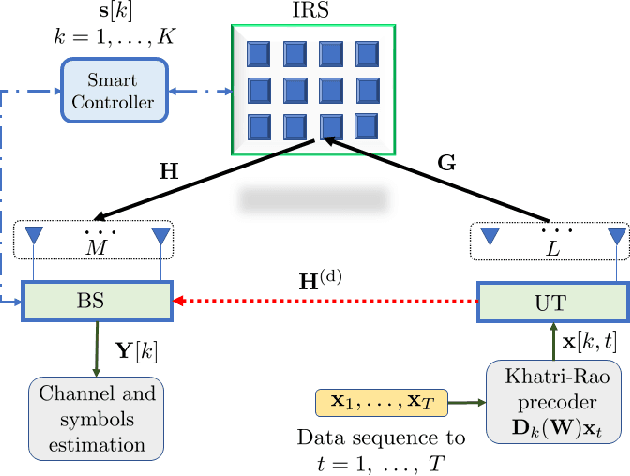Semi-Blind Joint Channel and Symbol Estimation for IRS-Assisted MIMO Systems
Paper and Code
May 20, 2022



Intelligent reflecting surface (IRS) is a promising technology for the 6th generation of wireless systems, realizing the smart radio environment concept. In this paper, we present a novel tensor-based receiver for IRS-assisted multiple-input multiple-output communications capable of jointly estimating the channels and the transmitted data streams in a semi-blind fashion. Assuming a fully passive IRS architecture and introducing a simple space-time coding scheme at the transmitter, the received signal model can be advantageously built using the PARATUCK tensor model, which can be seen as a hybrid of parallel factor analysis and Tucker models. Exploiting the algebraic structure of the PARATUCK tensor model, a semi-blind receiver is derived. The proposed receiver is based on a trilinear alternating least squares method that iteratively estimates the two involved - IRS- base station and user terminal-IRS-communication channels and the transmitted symbol matrix. We discuss identifiability conditions that ensure the joint semi-blind recovery of the involved channel and symbol matrices, and propose a joint design of the coding and IRS reflection matrices to optimize the receiver performance. For the proposed semi-blind receiver, the derivation of the expected Cram\'er-Rao lower bound is also provided. A numerical performance evaluation of the proposed receiver design corroborates its superior performance in terms of the normalized mean squared error of the estimated channels and the achieved symbol error rate.
 Add to Chrome
Add to Chrome Add to Firefox
Add to Firefox Add to Edge
Add to Edge